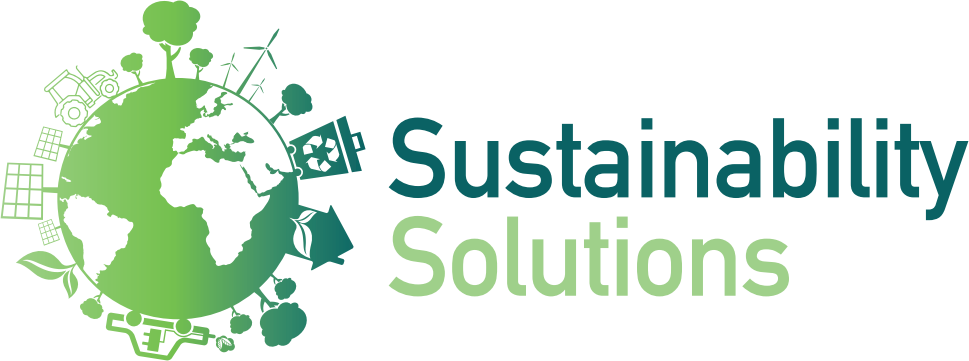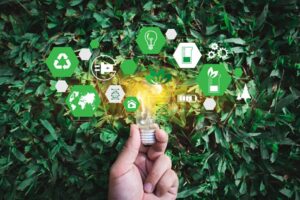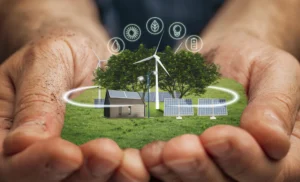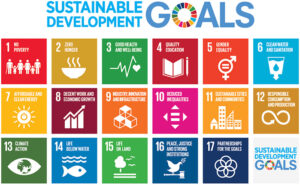Sustainable Solutions: Building a Greener Future for All
Introduction
As the world grapples with climate change, environmental degradation, and resource scarcity, the concept of sustainable solutions has become central to global discussions on development, business, and technology. Sustainability is no longer just a moral obligation; it is an urgent necessity that affects economies, communities, and ecosystems.
From renewable energy and circular economy practices to green technology and eco-friendly policies, sustainable solutions provide a pathway to balance human needs with environmental preservation. This article explores the meaning, importance, key areas, and future of sustainable solutions in building a greener future.
What Are Sustainable Solutions?
Sustainable solutions are strategies, technologies, and practices designed to meet present needs without compromising the ability of future generations to meet their own. They aim to minimize environmental damage, ensure social equity, and promote long-term economic stability.
These solutions can range from large-scale renewable energy projects to small everyday lifestyle changes. The key lies in designing systems that are resilient, efficient, and adaptable while reducing waste and carbon emissions.
Why Are Sustainable Solutions Important?
-
Climate Change Mitigation – Greenhouse gas emissions are driving global warming. Sustainable solutions such as renewable energy and carbon capture help reduce this impact.
-
Resource Preservation – Non-renewable resources like fossil fuels and rare earth minerals are depleting. Sustainability ensures efficient use and alternatives.
-
Economic Benefits – Green technologies create jobs, drive innovation, and attract investment.
-
Social Responsibility – Ensuring communities have access to clean air, water, and equitable resources.
-
Resilience Against Crises – Sustainable systems are better equipped to handle disruptions like pandemics, food shortages, or energy crises.
Key Sustainable Solutions Across Sectors
1. Renewable Energy Transition
The shift from fossil fuels to renewable energy sources such as solar, wind, hydropower, and geothermal is one of the most impactful sustainable solutions.
-
Solar power has become increasingly affordable.
-
Wind farms contribute significantly to reducing coal dependence.
-
Hydrogen energy is emerging as a clean fuel alternative.
By 2030, many nations aim to achieve significant renewable energy adoption, reducing global carbon emissions substantially.
2. Sustainable Agriculture and Food Systems
Agriculture contributes to deforestation, water scarcity, and methane emissions. Sustainable practices can transform food production:
-
Organic farming reduces chemical usage.
-
Agroforestry integrates trees with crops to improve biodiversity.
-
Vertical farming and hydroponics optimize space and water usage.
-
Plant-based diets reduce environmental strain compared to livestock farming.
3. Circular Economy Practices
The traditional “take-make-dispose” model is unsustainable. The circular economy emphasizes reuse, repair, and recycling.
-
Product design for longevity prevents waste.
-
Recycling initiatives convert waste into resources.
-
Sharing economy models like car-sharing reduce material demand.
4. Green Transportation
Transportation contributes heavily to emissions. Solutions include:
-
Electric vehicles (EVs) with battery innovation.
-
Public transit investments to reduce private car usage.
-
Cycling and pedestrian-friendly cities that promote healthier lifestyles.
-
Biofuels and hydrogen fuel cells for sustainable aviation and shipping.
5. Water Conservation Technologies
Water scarcity threatens billions of people. Solutions involve:
-
Smart irrigation systems in agriculture.
-
Desalination plants powered by renewable energy.
-
Rainwater harvesting for urban and rural use.
-
Wastewater recycling for industrial and domestic purposes.
6. Sustainable Urban Development
Urban areas consume over 70% of global resources. Eco-friendly cities are a priority:
-
Green buildings with energy-efficient design.
-
Smart grids for efficient energy distribution.
-
Waste management systems that prioritize recycling and composting.
-
Urban greenery for air purification and reduced heat islands.
7. Technological Innovation for Sustainability
Advances in artificial intelligence, IoT, and blockchain are driving sustainable solutions:
-
AI-powered energy management improves efficiency.
-
IoT-based sensors monitor pollution and optimize water usage.
-
Blockchain enhances supply chain transparency for ethical sourcing.
Challenges in Implementing Sustainable Solutions
Despite the clear benefits, several challenges exist:
-
High Initial Costs – Renewable energy infrastructure and green technologies require large investments.
-
Policy Gaps – Lack of consistent global regulations slows adoption.
-
Cultural and Behavioral Barriers – People may resist lifestyle changes.
-
Equity Issues – Developing countries may struggle with affordability and access.
-
Technological Limitations – Some solutions, like large-scale hydrogen fuel, are still under development.
Case Studies: Successful Sustainable Solutions
-
Costa Rica’s Renewable Energy Model
Costa Rica generates over 98% of its electricity from renewable sources, showcasing a national-level commitment to sustainability. -
Amsterdam’s Circular Economy
Amsterdam aims to be a fully circular city by 2050, focusing on resource reuse, urban farming, and waste elimination. -
India’s Solar Energy Revolution
India has emerged as a leader in solar power, with massive solar parks and rural solar electrification projects.
Future of Sustainable Solutions
The future will be shaped by integrating sustainability into every sector of society:
-
Green finance and ESG investments will direct capital toward sustainable projects.
-
Global climate agreements will enforce stricter emissions targets.
-
Consumer awareness will drive demand for eco-friendly products.
-
AI and automation will enable smarter, resource-efficient industries.
-
Youth movements and activism will pressure governments and corporations to act responsibly.
How Individuals Can Contribute
Sustainable solutions aren’t limited to governments or corporations. Individuals can play a critical role:
-
Adopt energy-efficient appliances and renewable sources at home.
-
Reduce single-use plastics and embrace recycling.
-
Choose public transport, walking, or biking over cars.
-
Support sustainable brands and local businesses.
-
Spread awareness about sustainability in communities.
Conclusion
Sustainable solutions are no longer optional—they are the foundation of a livable future. By combining innovation, policy, and collective action, humanity can transition toward systems that nurture both people and the planet. Whether through renewable energy, circular economies, sustainable agriculture, or conscious consumer choices, each step brings us closer to a greener and more resilient world.
The journey toward sustainability is ongoing, but with the right balance of responsibility and innovation, it is possible to secure prosperity without sacrificing the environment.
Robust AI Models: Building Reliability in the Age of Artificial Intelligence
Bio-Inspired Machine Learning: Learning from Nature to Build Smarter AI





